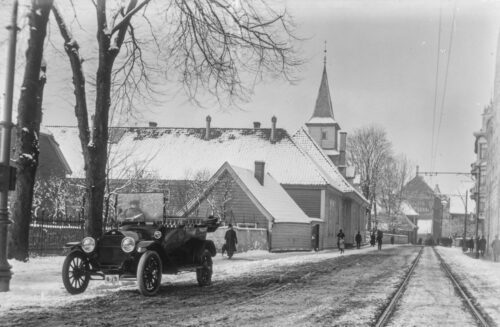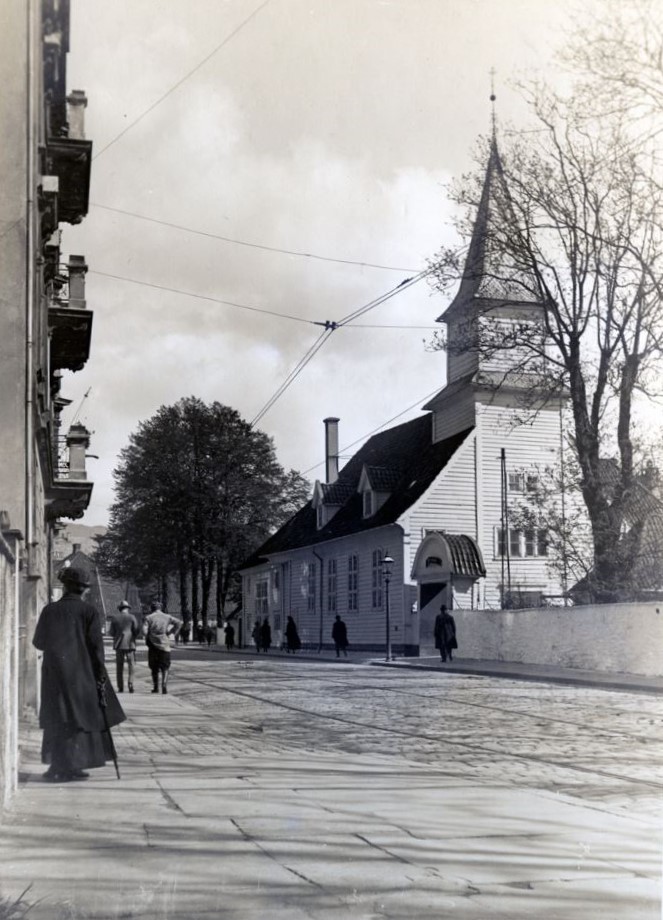The residents of St. Jørgen’s and the city of Bergen
It is often said that those afflicted with leprosy were isolated from the rest of society. The statutes from 1617 and 1654 state that patients must stay within the hospital’s boundaries, and not ‘run out into the city.’
However, in the 18th and 19th centuries, the residents at St. Jørgen’s were living relatively free lives and were allowed to leave the hospital and walk around the city. According to the hospital’s house rules, they were, however, not allowed to be out after 9 o’clock in the evening, nor in ‘cold and foul weather’, unless it was absolutely necessary.
The freedom to move around the city was criticized by doctors in the 19th century. The brigade medical officer Hjort believed that it must be unpleasant for people in the city to constantly have to see the sick. The courtyard was a public thoroughfare for people in the city, just as it is today, and a letter from 1832 mentions that this may have a harmful effect on those unaccustomed to seeing the sick, ‘especially expectant mothers and those with a nervous disposition.’
However, we know that the residents of St. Jørgen’s were visible in the cityscape. By royal decree in 1750, they had permission to go shopping in the marketplace. The residents also went around the city and sold the goods they had made. Edvard Hoff writes in the book ‘Fra Bergen omkring 1850’ that the sick went ‘about the streets and into houses selling small items, products of the little home industry that went on at the hospital.’ He remembered that kitchen utensils, such as ladles and stirring sticks, were among their products.
There did not appear to be any great fear of the disease. Experience showed that associating with the sick carried no great risk. Neither those who worked at the hospital nor people from Årstad, who had joint church services with the residents at the hospital, were affected by the disease. Other people in the city also attended church services in the hospital church. However, the way the sick looked and the idea that the disease was a punishment from God may have led to some people keeping their distance. The sick were perhaps treated with some degree of scepticism and, at the same time, were accepted as part of society.
In 1891, residents of the hospital were forbidden to sell their goods in the marketplace. The reason for this was that the understanding that the disease was infectious had gradually won acceptance, and that contact between the sick and other people should therefore be avoided.

Photo: Olai Schumann Olsen. The Universitetsbiblioteket i Bergen.




